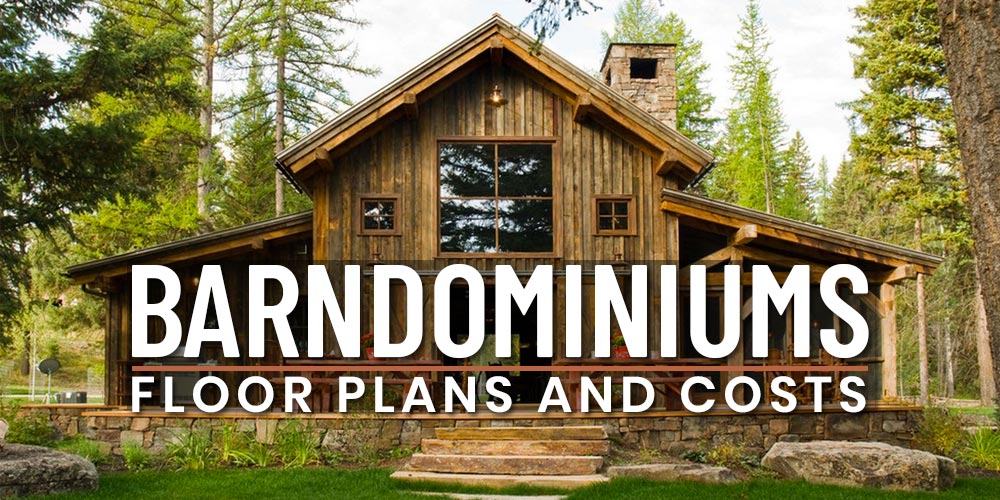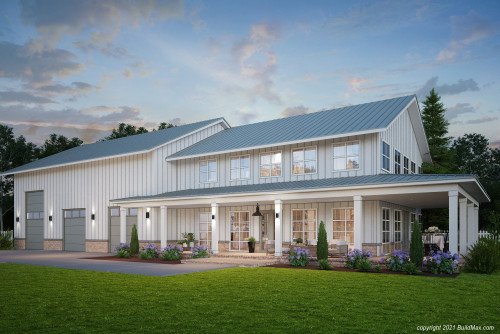Barndominium Repair Solutions: Quality Upkeep and Reconstruction
Barndominium Repair Solutions: Quality Upkeep and Reconstruction
Blog Article
Barndominiums Vs. Typical Houses: an In-depth Comparison of Way Of Life and Functionality
The decision between barndominiums and typical homes incorporates numerous variables, including lifestyle preferences and functional requirements. Barndominiums are characterized by their open formats and flexibility, usually attracting those that focus on communal living and convenience. In contrast, typical homes use a more structured setting, which may better offer households looking for personal privacy and a sense of background. As we take a look at the cost effects and environmental considerations, it comes to be clear that the choice expands beyond mere aesthetics and capability; it invites a much deeper exploration of what truly specifies a home.
Review of Barndominiums
Barndominiums, an unique housing trend acquiring appeal throughout numerous areas, mix the rustic beauty of barn-style architecture with the performance of modern-day space. These one-of-a-kind frameworks typically contain a metal or wood structure, integrating open layout and high ceilings with energy-efficient features. Frequently situated on expansive country homes, barndominiums provide property owners the chance to delight in a serene lifestyle while giving enough room for different activities.
The versatility of barndominiums expands past their visual charm; they can work as both living quarters and functional rooms for leisure activities, workshops, or perhaps local business. Their flexible style permits simple personalization, fitting varied family needs and preferences. Numerous owners value the low maintenance needs linked with metal siding and roofing, adding to long-lasting longevity.

Characteristics of Standard Homes
Emphasizing ageless layout and comfort, standard homes are defined by their distinctive architectural styles, which usually reflect historic influences and regional appearances. Typical attributes include symmetrical exteriors, gabled roofs, and an emphasis on craftsmanship, leading to a cozy and welcoming ambience.
Conventional homes commonly include components such as crown molding, wainscoting, and wood floor covering, boosting their traditional allure. They commonly include numerous areas with specified objectives, advertising household interaction while permitting privacy. click here. The design usually consists of official living and eating locations, which are helpful to entertaining guests and hosting family events
Outside materials such as brick, wood, or stone are often made use of, contributing to toughness and a feeling of durability. Barndominium builder. Furthermore, several traditional homes are created with front verandas or stoops, fostering a sense of neighborhood and link with the area
Landscape design plays a significant role in conventional home style, with well-kept gardens and pathways that improve aesthetic charm - visit site. Overall, traditional homes embody a sense of nostalgia and stability, interesting those who value heritage and an extra organized living setting
Cost Comparison
Normally, a cost comparison between barndominiums and traditional homes reveals considerable distinctions in building and construction costs and general financial investment. Barndominiums, commonly created from steel or steel structures, typically sustain reduced product and labor costs than conventional homes built from timber and brick. The simplified design of barndominiums can translate to decreased construction times, even more decreasing labor costs and expediting pop over to this web-site tenancy.
Generally, the price per square foot for a barndominium varies from $100 to $150, while typical homes can differ commonly, generally dropping between $150 and $300 per square foot, depending on area, materials, and layout complexity. This price variation makes barndominiums an appealing option for budget-conscious purchasers seeking bigger home without giving up top quality.
Additionally, barndominiums might result in long-term cost savings through reduced maintenance expenses, power effectiveness, and insurance rates. Their durable building products typically require less maintenance in time contrasted to conventional homes. It is crucial to think about that while initial prices may be reduced for barndominiums, the final investment will certainly likewise depend on specific customization and preferred services, which can influence the general expenditure in both real estate types.
Way Of Life and Area Factors To Consider
When taking into consideration way of life and room, barndominiums supply an unique flexibility that attract a range of house owners. These hybrid frameworks integrate property coping with useful space, typically including open flooring strategies that can be adjusted to suit private requirements. This versatility is specifically useful for households or people looking for a personalized living atmosphere, permitting varied uses such as office, workshops, or recreational locations.

Additionally, the aesthetic appeal of barndominiums can satisfy both rustic and contemporary preferences, making them a versatile option for various design choices (Barndominium repair). Eventually, the option in between a barndominium and a traditional home commonly rests on exactly how well each option straightens with the home owner's way of life desires and spatial needs, highlighting the value of taking into consideration personal priorities in the decision-making procedure
Environmental Effect and Sustainability
The ecological impact and sustainability of barndominiums existing compelling benefits contrasted to standard homes. Mainly built from steel and various other resilient products, barndominiums are typically built making use of recycled sources, reducing the need for new products and minimizing waste. Their style commonly stresses open rooms, which can bring about reduced energy consumption for cooling and heating compared to typical homes with even more segmented formats.
Furthermore, barndominiums can incorporate sustainable features such as solar panels, rain harvesting systems, and advanced insulation strategies, enhancing their energy performance. The adaptability of their layout enables property owners to incorporate these modern technologies a lot more effortlessly than in many typical homes, which might require extensive retrofitting.
Additionally, barndominiums frequently call for fewer sources for building due to their less complex, a lot more efficient layouts (website). Overall, barndominiums represent a forward-thinking approach to sustainable living, straightening with modern ecological priorities.
Final Thought
In summary, the option between barndominiums and typical homes pivots on individual way of life preferences and functional demands. Barndominiums, with their open layouts and sustainable materials, cater to those seeking flexibility and communal living.
Report this page